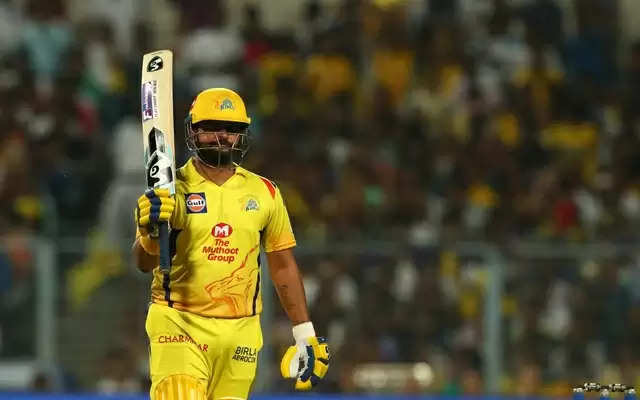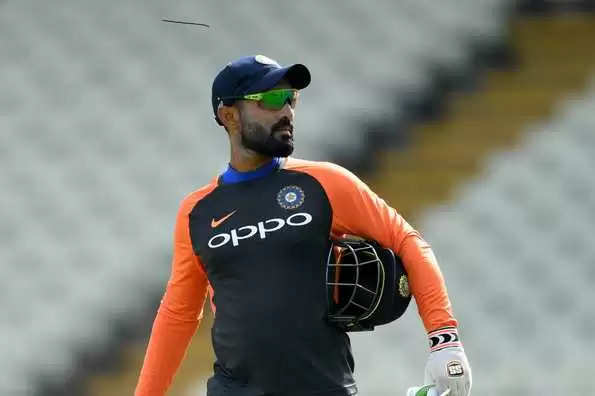Why BCCI doesn’t allow Indian male players to take part in leagues other than the IPL?

Experienced Indian wicketkeeper-batsman Dinesh Karthik expressed his desire to play the inaugural edition of The Hundred in UK, starting July 22. Karthik, who is in England for a commentary stint with Sky Sports, has made his wish to play the maiden 100-ball competition public.
Speaking to The Guardian, Karthik said if given an opportunity, he would love to play for one of the eight franchises taking part in the first-ever season of The Hundred.
Dinesh Karthik expresses his desire to play in #TheHundred .
Which Indian player could be a star in franchise leagues? pic.twitter.com/NqcYXuYMAp
— CricXtasy (@CricXtasy) July 17, 2021
However, it is unlikely that Dinesh Karthik would have his wish fulfilled any time soon as the Board of Control of Cricket in India (BCCI) has a very strict stance on Indian cricketers taking part in leagues other than its own Indian Premier League (IPL).

The board doesn’t offer the No Objection Certificate (NOC) to any of its active cricketers to play leagues such as the BBL, CPL and PSL among others. Previously also, there have been calls from prominent, out-of-favour Indian players to be allowed to ply their trade in these leagues and push for re-selection, apart from expanding their earning opportunities. But the board has shown no leniency towards them.
Thus Karthik, while opening up on the desire to play The Hundred, also kept in mind the Indian board’s stance and said he doesn’t have a major issue following the eligibility rules set by the BCCI.
“Given an opportunity (to play The Hundred), why not?” Dinesh Karthik was quoted as saying by The Guardian. “But because of the rules that are in place right now, we are not able to come to play. But who knows, if things can change, why not?”
“I know a few of the cricketers – the likes of Suresh Raina, Robin Uthappa – they have come out and said they would like to play a few other franchise leagues but I don’t think it’s been accepted as of now.”

While wishful of The Hundred participation, Dinesh Karthik was mindful of the BCCI stance on the same.
To have his fate in his own hands with regards to The Hundred participation, Karthik will have to retire from Indian cricket and give up on his deal with Kolkata Knight Riders (KKR) in the IPL. Aware of the same, the 36-year-old cricketer said he is happy abiding by the BCCI regulation at the moment.
“We’ll wait and see. I would love to play. But with the rules in place, I’m very happy following them. We represent the BCCI, we represent the country. Whatever the rules are, I guess we have to follow them at this point in time,” Dinesh Karthik said.
As Karthik stated above, Suresh Raina and Robin Uthappa have also been vocal about the issue. No other cricket board in the world has such a policy in place.
While the BCCI has been happily hosting a rising number of overseas players during every edition of the IPL, the Indian representation in leagues outside the country remains minimal.
The BCCI banned Mumbai leg-spinner Pravin Tambe from playing the IPL last year as he had played in a T10 tournament in UAE. Off-spinner Harbhajan Singh, who was initially part of The Hundred’s draft, had to pull out of the same as it put his IPL contract at risk.
But why exactly does BCCI not allow Indian male cricketers to play in the foreign leagues?
The idea is not to let any other league in the world firm its foothold in the giant Indian market, which would happen if big-name cricketers from the country are allowed to play. With their policy, the BCCI maintains IPL’s edge over other popular domestic competitions and also ensures active Indian cricketers are available for its domestic and international assignments, avoiding a West Indies-like situation.
But what other boards are doing about it?
Nothing. They have no option really. Boards other than the BCCI operate around the risk of losing their players to IPL’s million-dollar gigs forever if they don’t comply with the BCCI’s interests. Also, these cricket boards earn indirectly from their players’ IPL participation, as they get around 20% of their players’ contract fee from the Indian T20 league. This, especially in the case of boards like New Zealand Cricket (NZC), is a significant portion of the money that they can offer to their players in the form of annual contracts sum.
Besides, these boards are wary of compromising relationships with the BCCI, which could mean losing out on important India tours at home and thus a drastic drop in the value of their domestic and overseas bilateral rights. So, all in all, other boards have no choice but to allow their cricketers to play the IPL without expecting any of the Indian stars to turn up in their leagues in return.
The BCCI have the right to look after their interest, but are they being short-sighted?
Yes. In restricting Indian players’ participation in these leagues, the BCCI is denying them the opportunity to get some crucial experience of foreign conditions, expanding their games and range, besides improving their financial standing. If a cricketer has been out of the Indian team for long and is also nearing a point where he feels he might not retain his IPL spot for too long, leagues outside India could help him sustain his livelihood.
“I wish BCCI plans something with ICC or the franchises that Indian players who don’t have a contract with the BCCI are allowed to play outside,” Raina said during an Instagram Live chat with Irfan Pathan last year. “At least allow us to play in two different foreign leagues. If we play quality cricket in terms of foreign leagues, then it would be good for us. All international players make a comeback by playing in all those leagues.”
“I would suggest that all those players who are 30 years old and they are not on your radar to play international matches, you should allow them to play in foreign leagues,” Pathan said.
It’s perfectly fine to not give everyone a free hand but a selective approach to the same, focusing solely on non-contracted cricketers or those part of the mix in white-ball cricket could be game-transforming. If India are busy with a Test series, limited-overs players could be allowed to play some league outside India to ensure their progress isn’t affected and they are ready to go for their next international assignment.
Just for query, is the BCCI stance different for Indian women’s team players? If so, why?
Yes, it is. Recently, the BCCI issued NOCs to Shafali Verma, Jemimah Rodrigues, Smriti Mandhana, Harmanpreet Kaur and Deepti Sharma to take part in the women’s version of The Hundred. The board has previously also allowed the female Indian cricketers to play leagues such as the WBBL in Australia and KSL in England.
The reason is simple. Unlike their male counterparts, Indian women’s team players don’t yet have an IPL-style popular event of their own and thus there is no fear of other leagues extending their position in the Indian market with their inclusion.
A wider share of the Indian market would reduce the broadcasters’ financial strength and subsequently IPL’s revenue pool, the BCCI presumably thinks. There’s a line of though, however, that the influx of big name Indian male stars in say the CPL would increase their popularity outside India and that would multifold IPL’s own popularity in foreign markets like the USA when these cricketers return to play for their respective IPL franchises.

